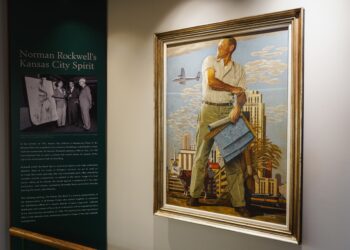Have you ever used your creative imagination to write a novel that has been published? Compose a piece of music that has been performed? Draw, paint, or sculpt a work of visual art that you subsequently sold? Of course, you don’t need to be a musician to hear an original melody in your head or an artist to visualize colors and form. Perhaps you have had a creative moment on the sports field like a great solo run, a penetrating pass, or a brilliant shot at goal from a seemingly impossible angle.
Creative imagination is an intriguing phenomenon where something new and somehow valuable is formed. It involves seeing possibilities beyond existing constraints. This moment of clarity is often vivid, and can take the form of a grand vision, or a “seeing” of something one has not seen before. Like Archimedes’ ‘eureka moment,’ jumping from his bath when he experienced a leap of understanding about the principle of displacement.
Normal experience of creative imagination
In ordinary life, we might spontaneously conjure up alternatives to reality when we think “if only… “ and something original is imagined or a new perspective emerges that sheds light on the mundane. Arguably an element of creativity is needed to come up with an original solution to any unique practical problem of daily living.
One can also be creative in what one says in day to day conversation e.g. being amusing to entertain, saying something resourceful to help someone deal with difficulty, or being inventive to encourage interest.
How then to account for creative imagination? Where does it come from?
A humanist’s perspective on creative imagination
The contemporary concept of creativity in human beings started during the Renaissance and became more pronounced as an intellectual movement at the time of the Enlightenment. Creation began to be perceived as having originated from the abilities of the individual, rather than from God the Creator. Humanism became a leading intellectual movement. This was an intensely human-centred outlook on the world, valuing the intellect and achievement of the individual. A naturalistic way of thinking accompanied by the growth of the sciences.
Natural brain processes
Scientists often supposed that creative imagination is the same thing as divergent thinking. Convergent thinking involves aiming for a single, correct solution to a problem, whereas divergent thinking involves creation of multiple answers to a set problem.
According to the current science of cognitive psychology, divergent thinking is the process of creative imagination involving the natural processes of the brain. These use such functions as memory, reasoning, visualization, association, etc. These go on in the background of our conscious mind.
Scientists usually assume that only brain activities cause illumination or insight. The creative idea bursts forth from its pre-conscious processing into conscious awareness.
Kekulé’s discovery
Thus, many scientists today think of creative imagination as resulting only from an interaction between one’s current knowledge and the information received from the world.
One example, said to illustrate this idea about creative imagination, is Kekulé’s flash of illumination about the ring structure of the benzene molecule. The discovery made possible the chemistry of aromatic compounds. Kekulé was dozing when he visualized rows of atoms moving in snake-like motion. One of the snakes chased its tail and seized hold of it thus forming a pattern.
Materialistic commentators looked for other experiences that might have played a part. Before being a chemist, Kekulé trained his visual perception in the field of architecture. They supposed he might have been at the zoo in the morning and might have watched some dance performance in the afternoon. It is these assumed chance coincidental experiences they think that contributed to his novel insight.
A transpersonal perspective on creative imagination
An alternative perspective is that creativity, in addition, comes from something unseen beyond the individual. To inspire is to breathe in what gives life. We may at times find ourselves stirred and moved. But we do not know where the inspiration comes from. I think I know the reason. When people focus on worldly things, they do not believe in any influx from a higher realm.
Ancient Greeks often accepted Muses as mediating inspiration from the gods. Later, Greeks and Romans invoked the concept of an external creative “daemon” or “genius,” linked to the sacred or the divine.
Effort and creative imagination
My creative process involves that old saying: “It’s 90% perspiration and only 10% inspiration,” first cited by Rosabeth Moss Kanter, a professor at Harvard Business School.
While inspiration is not the same as effort, effort is an essential condition for inspiration, preparing the mind for an inspirational experience. Also, research suggests that creative imagination comes from having an open mind to new experience.
This raises the question of whether creativity involves personal motivation to both be open to and act on a world of new possibility. Arguably, if we bottle up good things that are flowing through us, then we can’t expect to receive more; first the good needs to flow through us into action. The more you put into something, the more you get out of it. This motivation is different from pursuing your own agenda and wanting your own way or jumping to conclusions based on your own prejudices. Blocks to creativity thus include being judgmental and striving for self-gain.
The spiritual world
According to mystic Emanuel Swedenborg, we tend to believe that each of us is the originator of all we think and desire. However, he maintains that a flow of ideas and impulses comes into our mind via a hidden realm of, what he calls, ‘the spiritual world’ consisting of different communities of the spirits of people who survive bodily death. Their presence induces ideas and images into our subjective consciousness.
How open are you to the experience of creative imagination? Can inspiration come from a transcendent dimension? And if so what are the consequences of this understanding for you personally?
About the author: As a clinical psychologist, Stephen Russell-Lacy has specialised in cognitive-behavioural psychotherapy, working for many years with adults suffering distress and disturbance. His eBook Heart, Head and Hands draws links between the psycho-spiritual teachings of the eighteenth century spiritual philosopher Emanuel Swedenborg and current ideas in therapy and psychology.
By Stephen Russell-Lacy












